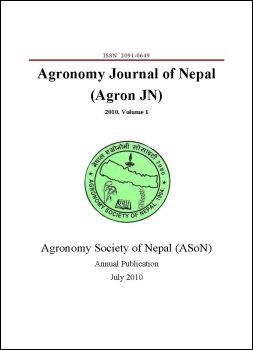Effect of climate change on food production and its implication in Nepal
DOI:
https://doi.org/10.3126/ajn.v1i0.7541Keywords:
Climate change, food security, food sovereignty, food crisisAbstract
Climate change is a complex phenomenon. Now climate change has become a buzz word in general and particular to agriculture and food security. It is true for developing countries where there is a dearth of information to support and reject such a complex phenomena of this universally important aspect of nature. Climate change is as unpredictable as the movement of a bird in the sky that even an ornithologist cannot predict the movement of a falcon that is swinging in the air and so is the case of climate change even for meteorologists working in the World Meteorological Station. The main concern about climate change and food security is that changing climatic conditions can initiate a vicious circle where infectious diseases cause or compound hunger, which, in turn, make the affected populations more susceptible to infectious disease. The result can be a substantial decline in labor productivity and an increase in poverty and even mortality. Essentially all manifestations of climate change, such as drought, higher temperatures, or heavy rainfalls could have an impact on the disease pressure on plants and animals. Also, climate change could affect food safety and food security. It is anticipated that due to climate change many flora and fauna including humans, higher plants and animals will face new diseases due to easily expansion of diseases causing epidemic cycle making more favorable to pathogens in different parts of the world. There will be a continuous outbreak of such diseases making hunger and malnutrition more severe than ever and consequently affect for important food commodities due to changing climate of tropical, temperate and equatorial zones, the main biodiversity zones for population and food production as well. Hence, this paper tries to provide a brief review on climate change with respect to food security and crop production, which, ultimately, could suggest agronomic measures to mitigate the impacts of climate change and adopt vagaries of climate change in the days ahead for an agrarian country like Nepal.
DOI: http://dx.doi.org/10.3126/ajn.v1i0.7541
Agronomy Journal of Nepal (Agron JN) Vol. 1: 2010 pp.40-49
Downloads
Downloads
Published
How to Cite
Issue
Section
License
ASON permits for free use, distribution and reproduction in any medium if the original work is properly cited and not used for commercial purposes.




